The Ultimate Yoga Equipment Guide for Freelancers: Essentials for a Productive Practice
Freelancing offers unrivaled flexibility and independence, but with that freedom comes the challenge of maintaining a balanced lifestyle. Yoga is a proven remedy for stress, poor posture, and lack of movement—issues many freelancers face. However, to truly reap the benefits of yoga, it’s crucial to have the right equipment at your disposal. This comprehensive guide will walk freelancers through the essential yoga tools, providing guidance on selecting and using each one to transform your home office into a rejuvenating wellness space.
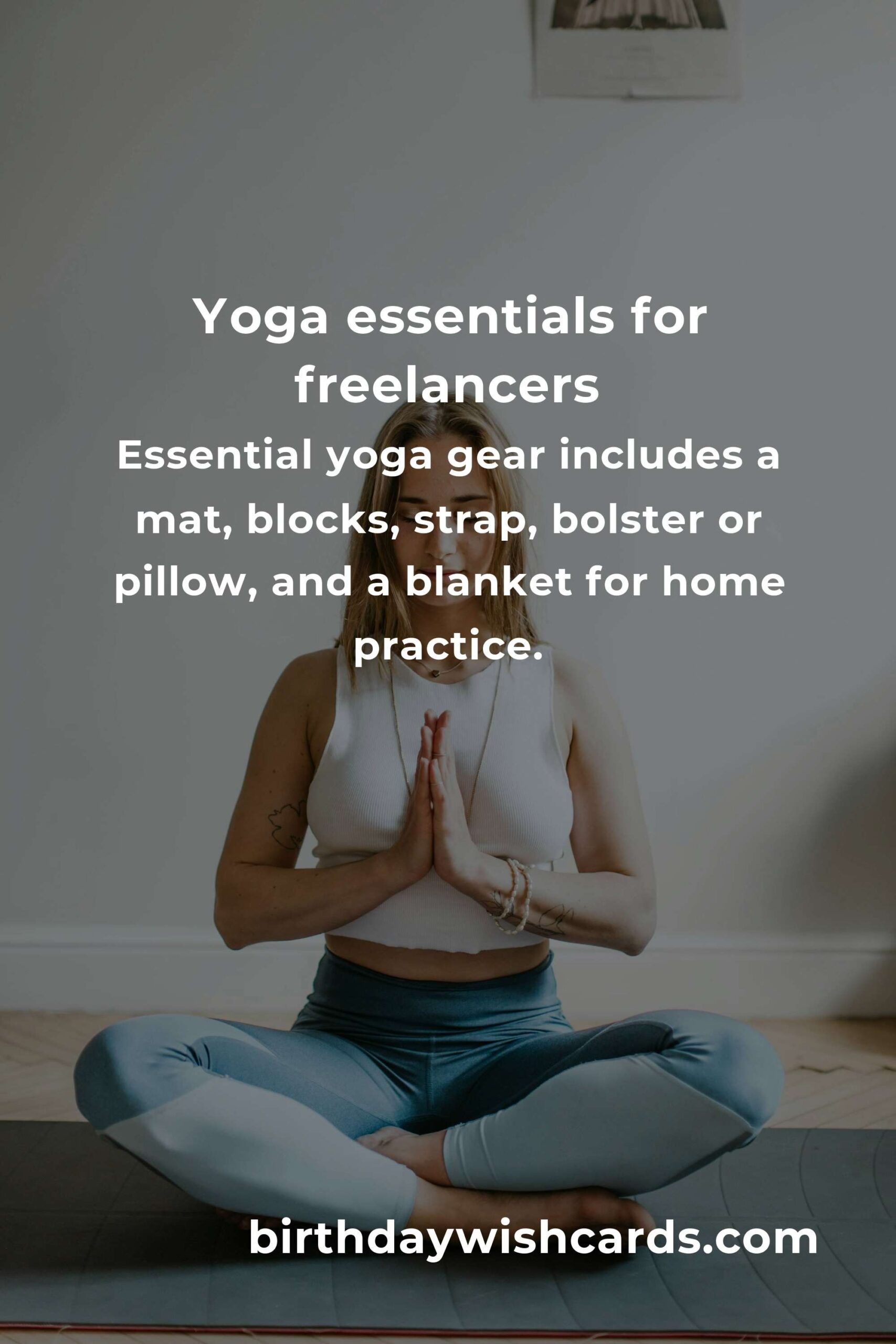
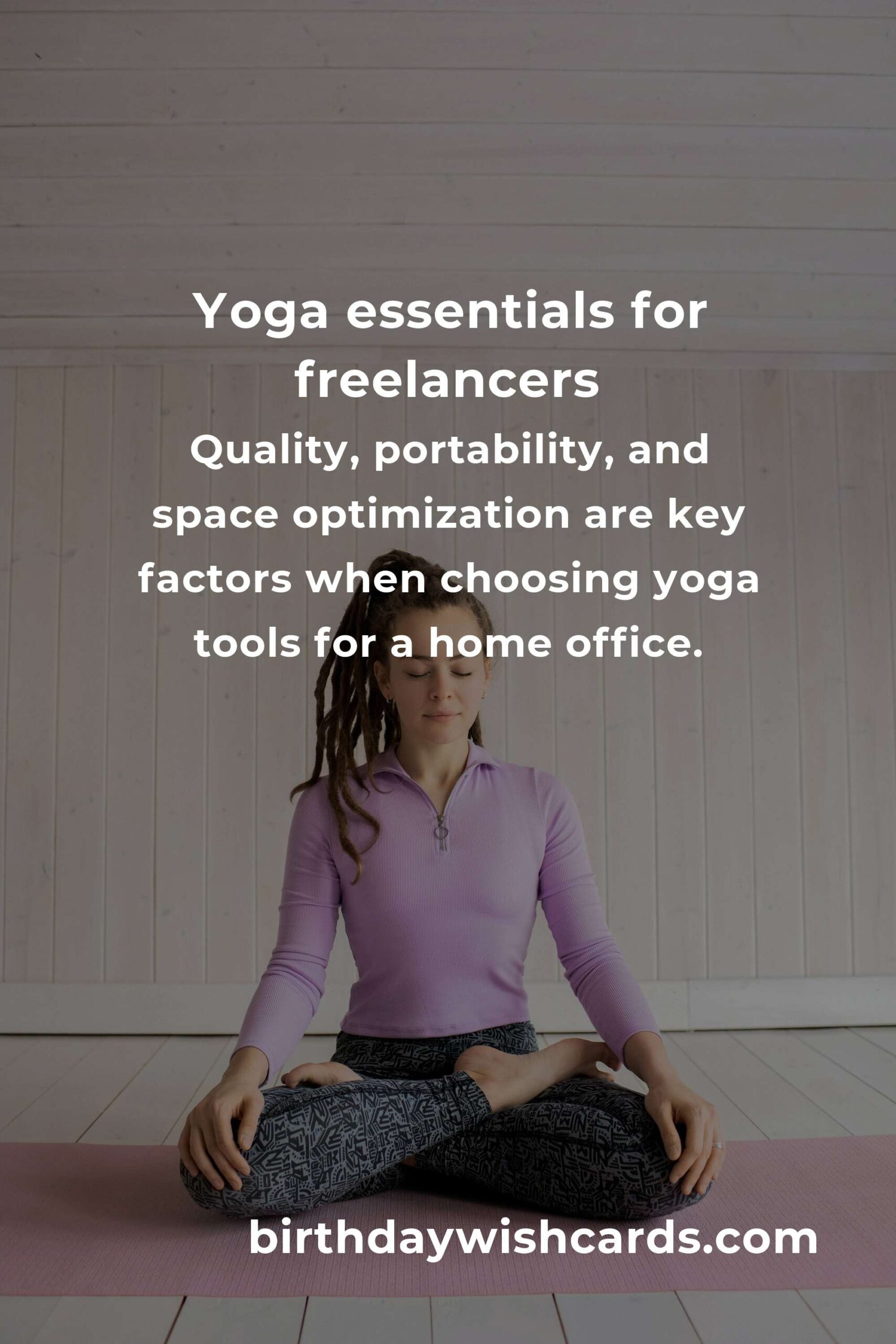
Why Yoga Equipment Matters for Freelancers
Unlike standard office workers, freelancers often craft their own schedules and environments. This autonomy is both a freedom and a responsibility—especially when it comes to self-care. Incorporating yoga into your daily routine combats the sedentary lifestyle, helps reduce work-related anxiety, and fosters creativity. Investing in quality yoga gear enables you to build a consistent practice, reduce barriers to starting, and avoid injury with proper support.
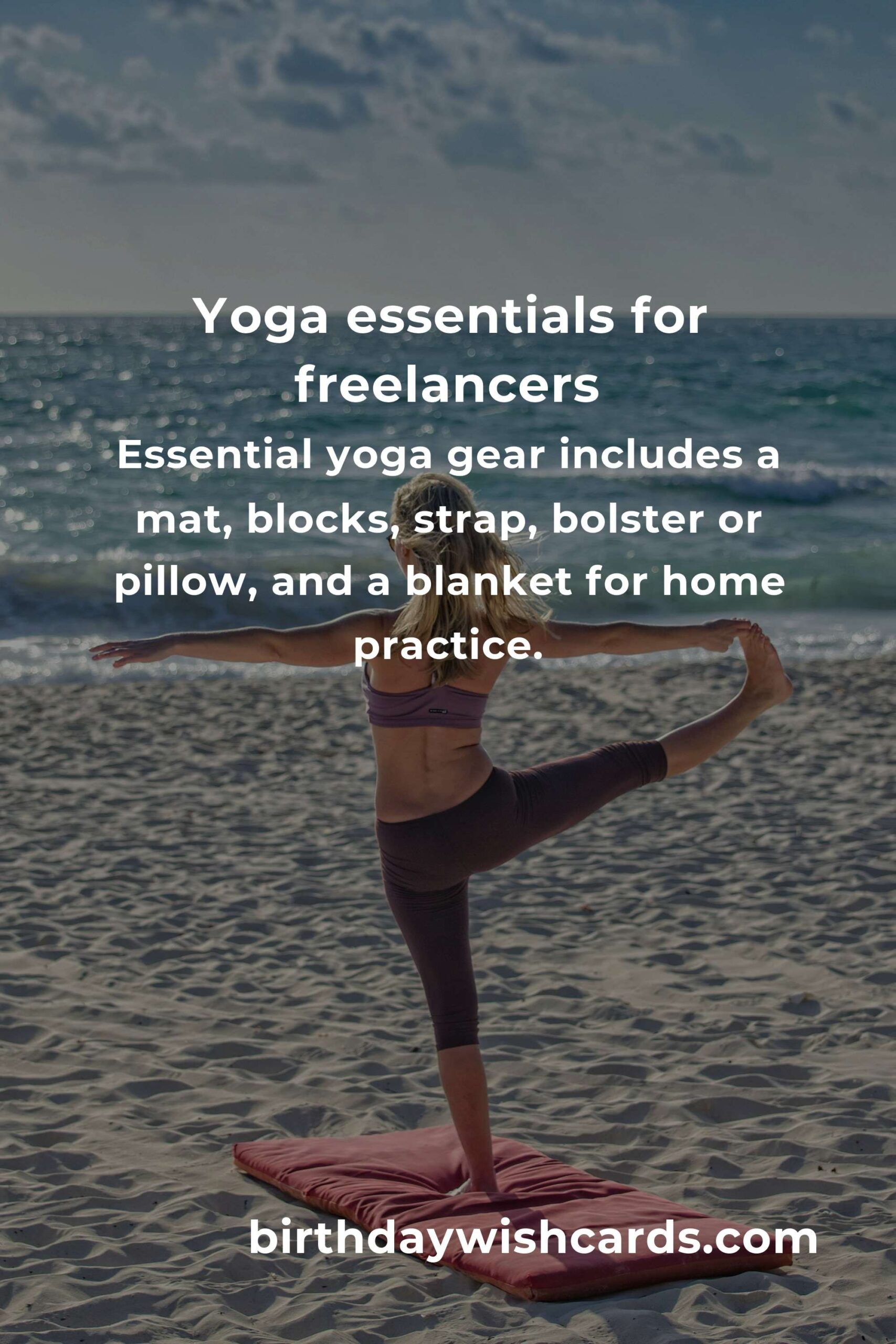
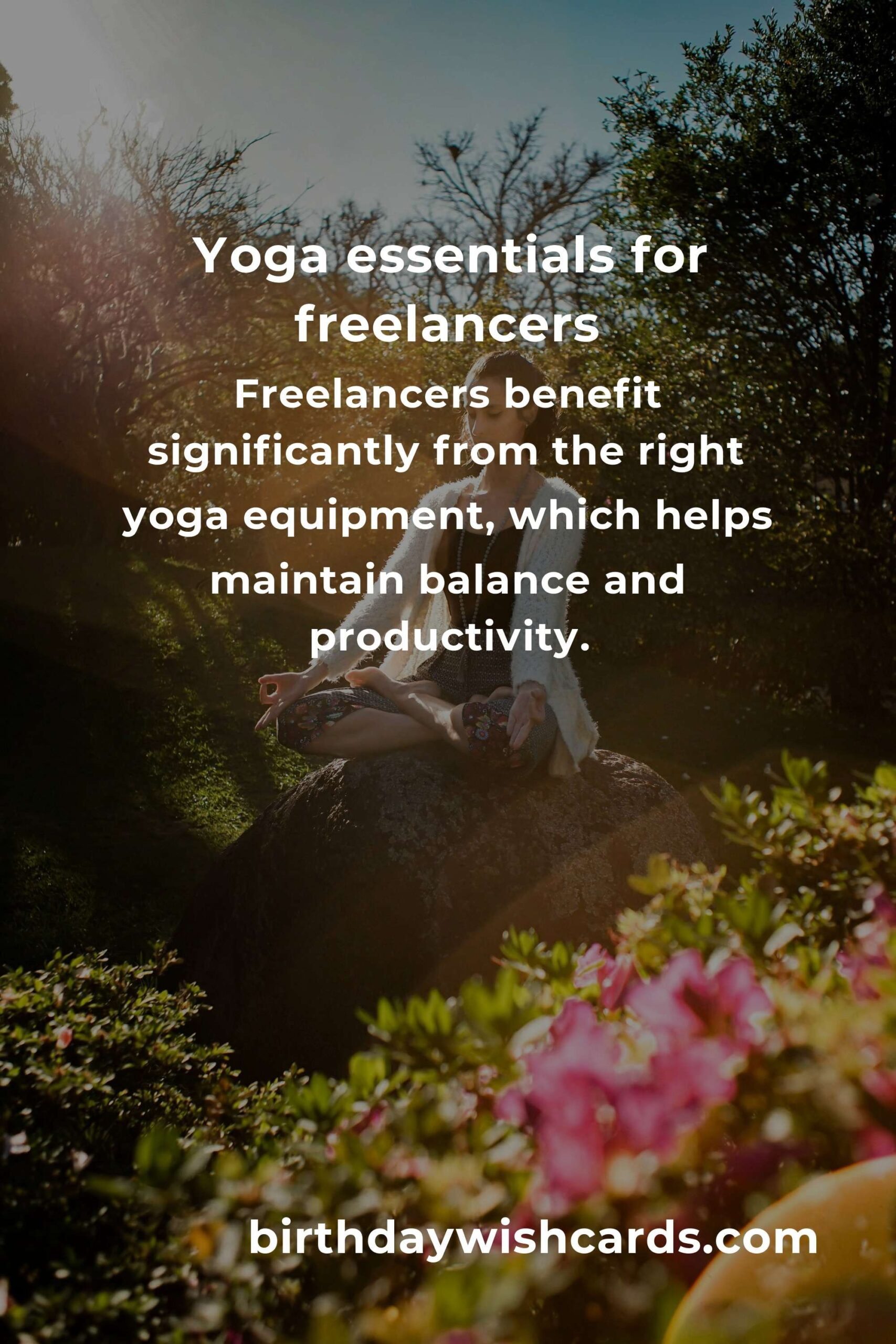
Essential Yoga Gear Every Freelancer Should Own
Starting a yoga practice at home doesn’t mean you need every accessory on the market. However, some key pieces dramatically improve comfort and safety. Let’s break down the essentials:
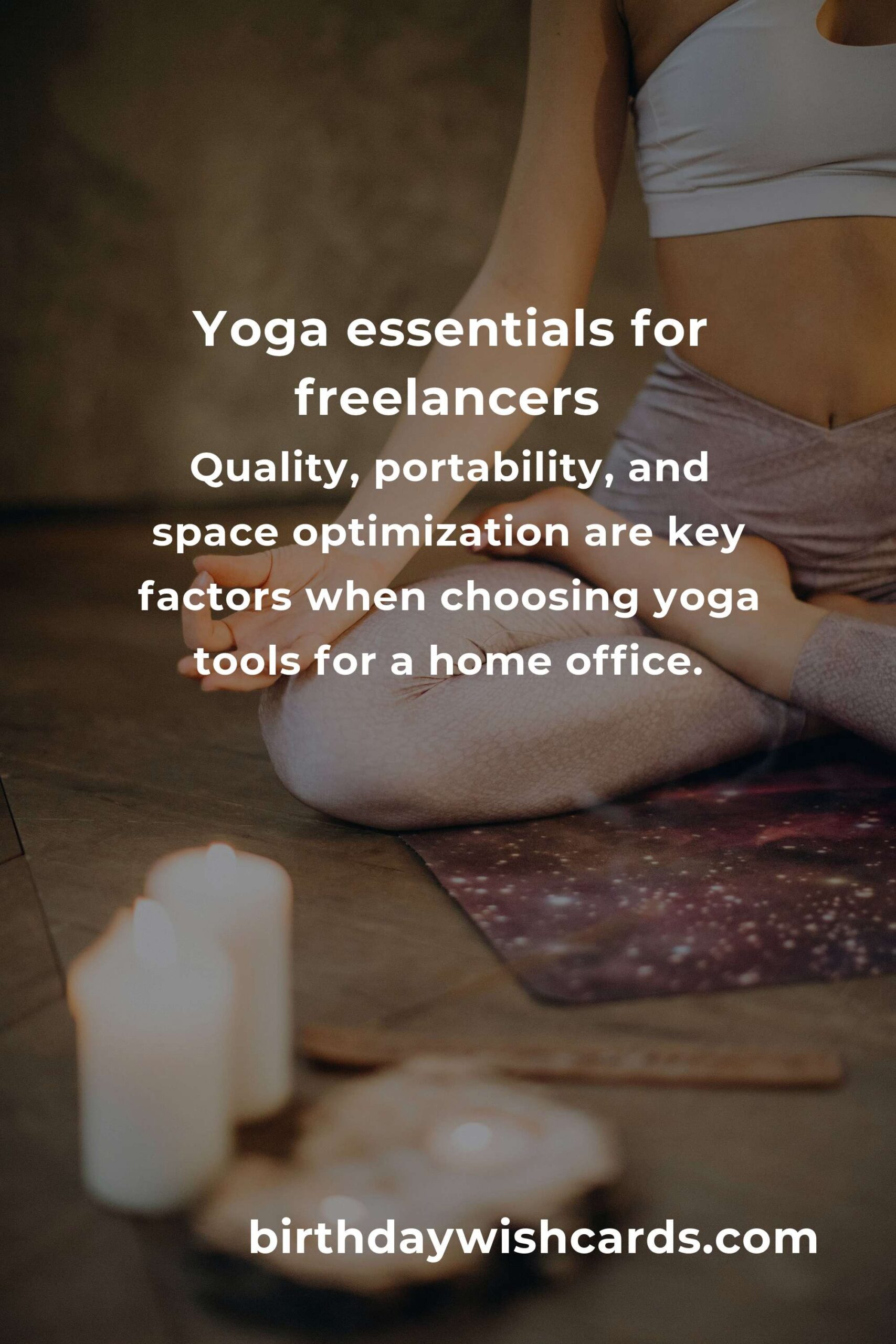
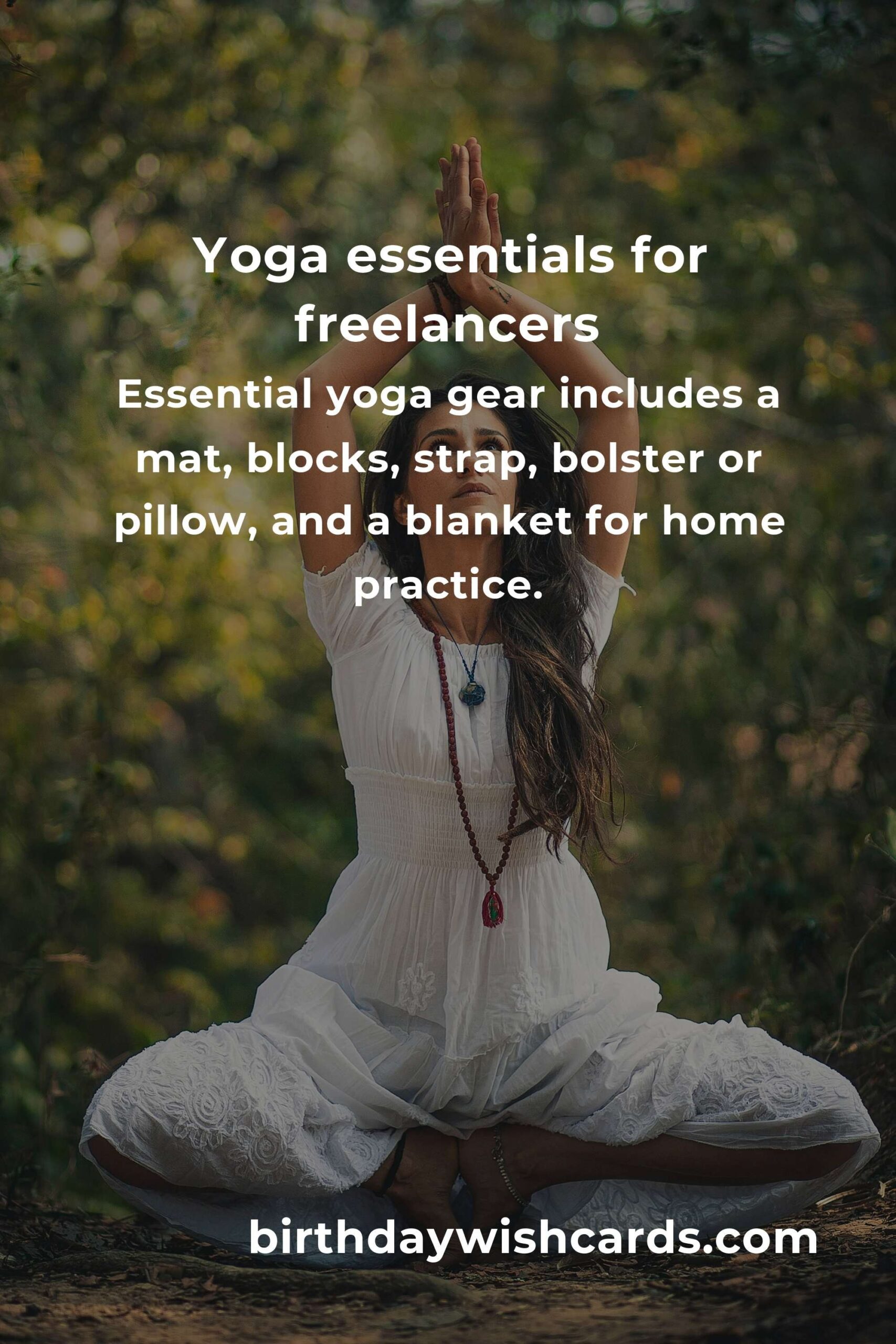
1. Yoga Mat
The cornerstone of any practice, a yoga mat provides grip, cushioning, and defines your practice space. Look for mats offering at least 4mm thickness to protect your joints, especially if your workspace has hard floors. Eco-friendly mats made from natural rubber, jute, or cork are great for those conscious of their environmental footprint.
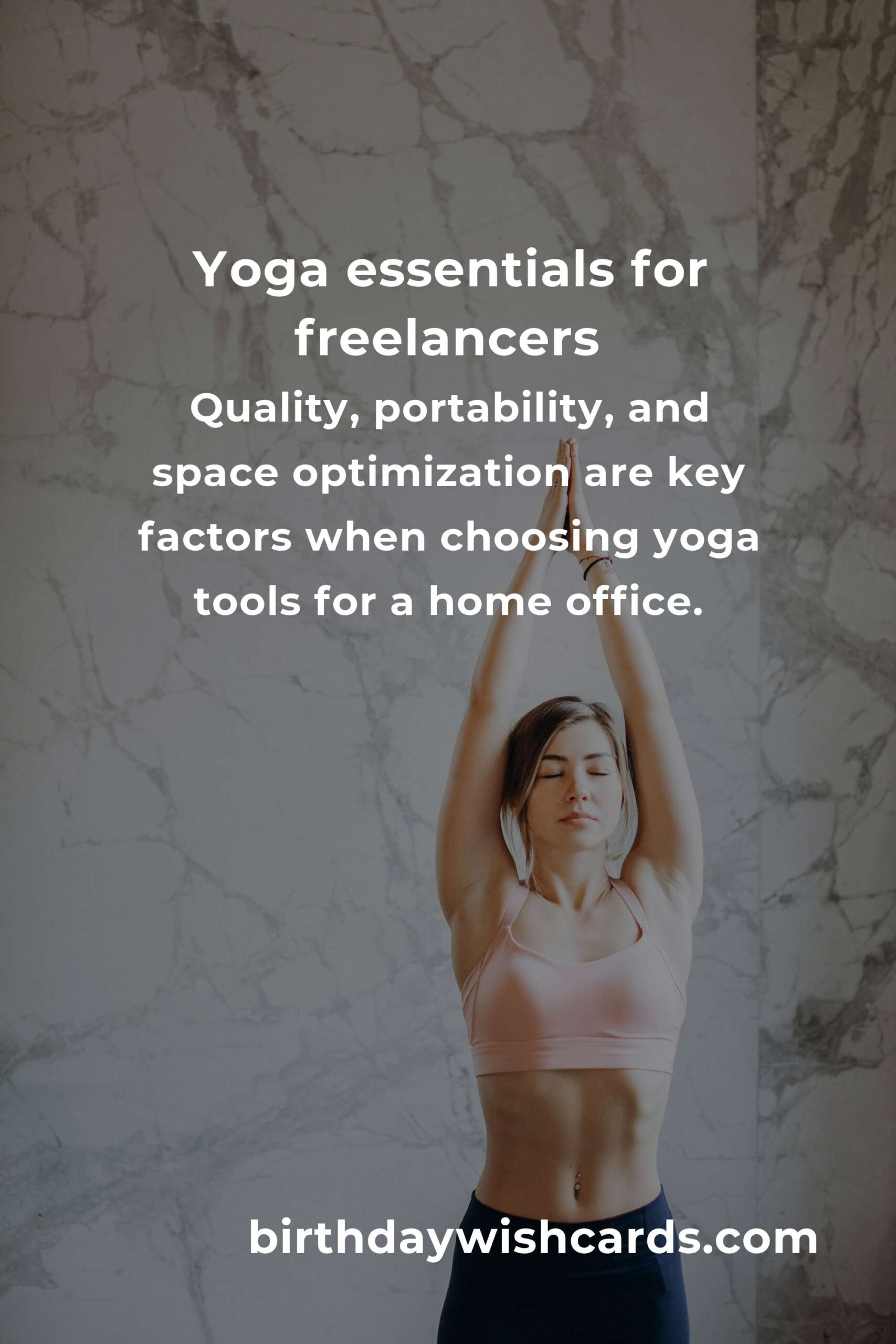
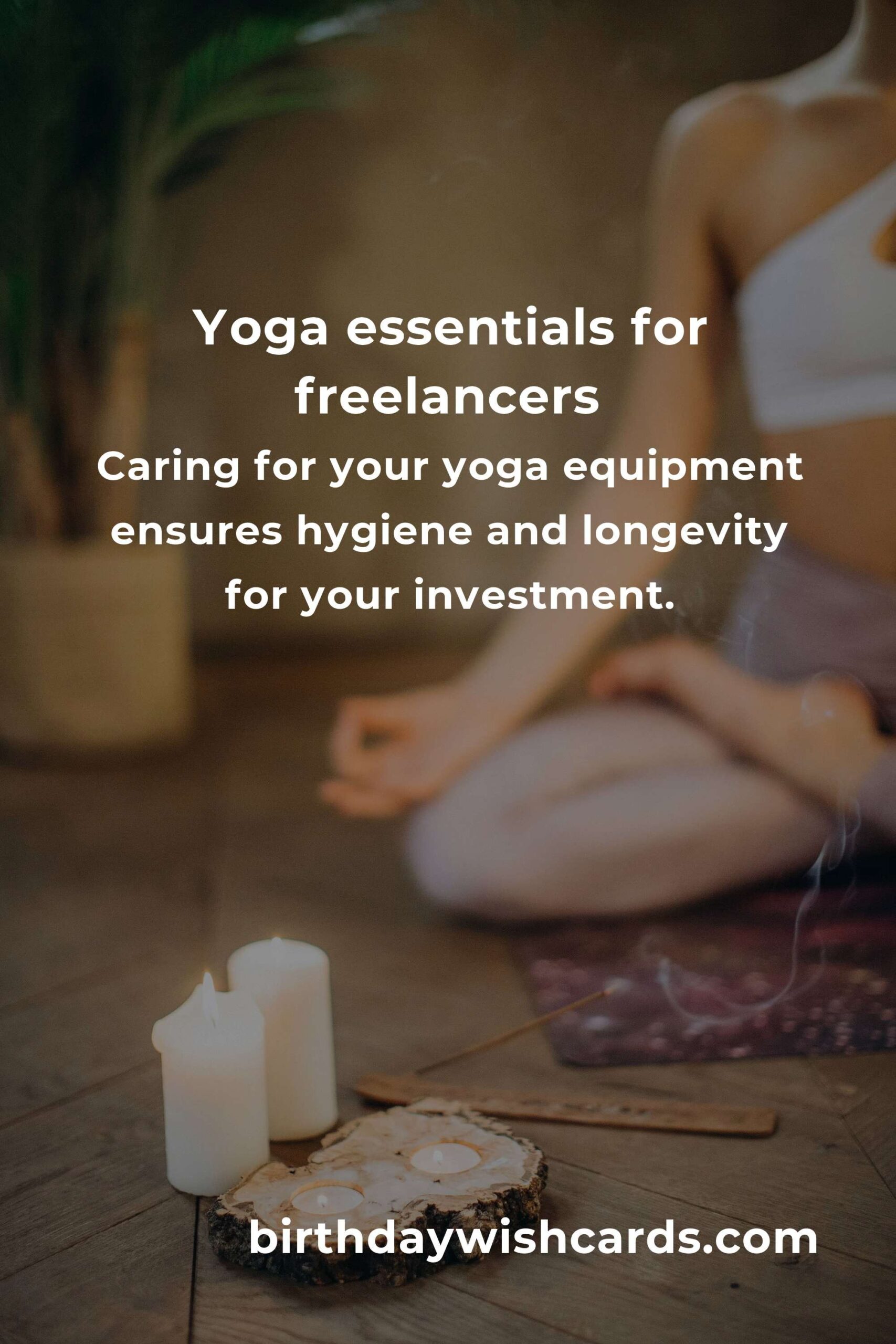
2. Yoga Blocks
Yoga blocks act as an extension of your arms and help stabilize tricky poses or bridge gaps in flexibility. Two blocks are ideal, allowing greater versatility for beginner and advanced freelancers alike. Choose lightweight foam for portability or cork for extra stability.
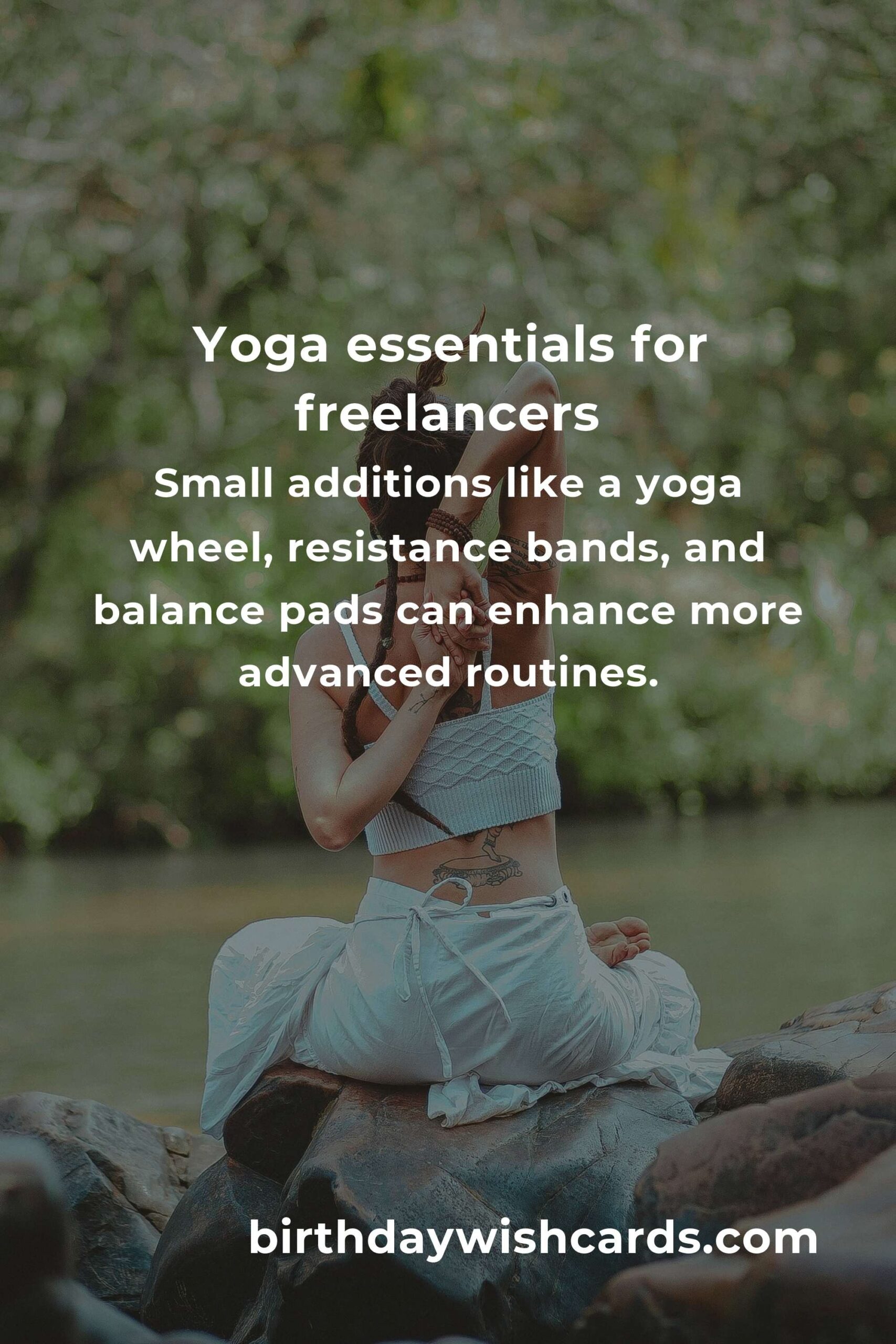
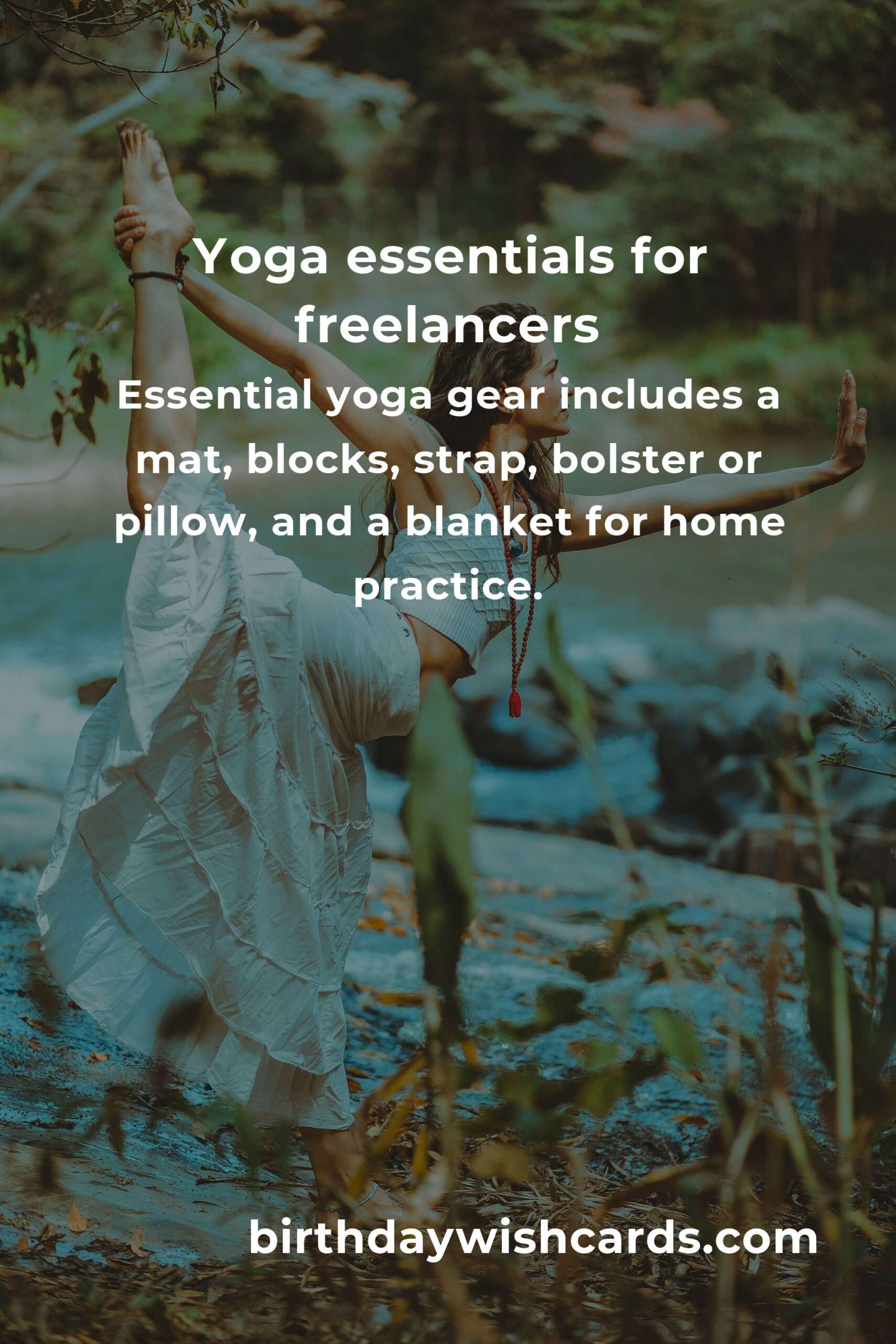
3. Yoga Strap
A yoga strap assists with stretching and deepening poses like seated forward bends. It’s a must-have for freelancers who spend long hours at their desks and need gentle ways to open up the body. Look for straps with sturdy D-rings for adjustable length and durability.
4. Bolster/Pillow
Yoga bolsters offer added support for restorative poses and meditation, promoting relaxation and helping to alleviate back strain. Alternatively, a firm pillow can double as a bolster in a pinch.
5. Blanket
Blankets provide gentle support under the knees, hips, or neck. They’re also useful for covering yourself during Savasana (the final relaxation) to stay warm and comfortable.
Nice-to-Have Yoga Accessories for Advanced Freelancers
Once you’ve established a regular practice, consider enhancing your home studio with these accessories:
- Yoga Wheel: Great for stretching the back, chest, and shoulders, or adding a dynamic element to your yoga flow.
- Balance Pad: Improves stability and core strength, especially beneficial if you’re rehabilitating an old injury.
- Yoga Towel: Essential for hot yoga or sweaty practices, these towels prevent slipping and absorb moisture.
- Resistance Bands: Not just for strength training, bands assist in deep stretches and recovery sessions.
Choosing the Right Yoga Equipment: Key Considerations
Quality Over Quantity
Freelancers often juggle tight budgets and limited space. Instead of overloading your workspace, choose multi-purpose, high-quality equipment that will last years. Read reviews, check material durability, and opt for trusted brands known for ethical manufacturing.
Portability
If you like to practice in different rooms or even outdoors, consider lightweight mats and foldable accessories. Portable equipment means you can take your practice on the road or enjoy a stretch in the park between work sessions.
Space Optimization
Freelancers working from home might have limited room. Select items that store compactly—look for blocks that neatly stack, straps that roll up, and foldable mats for storage under your desk or bed.
Setting Up Your Freelancer Yoga Space
Your yoga space needn’t be an entire room. Even a small corner can become a sanctuary with some intention and creativity.
- Clear the Area: Remove clutter and dedicate at least two square meters for movement.
- Define Boundaries: Laying out your yoga mat signals a ‘no work’ zone, helping to mentally separate professional and relaxation spaces.
- Add Ambiance: Soothing music, a diffuser with calming essential oils, and soft lighting can boost relaxation and motivation.
- Keep Equipment Within Reach: Store your mat, blocks, and other tools in a basket or nearby shelf to encourage regular practice.
Yoga Practice Tips for Busy Freelancers
Integrating yoga into a freelancer’s unpredictable schedule can be a challenge. Here are practical ways to stay consistent:
- Start Small: Even a 10-minute flow between meetings or assignments delivers benefits. Prioritize frequency over duration.
- Create a Routine: Schedule yoga breaks into your calendar, just like important work tasks.
- Utilize Online Resources: Leverage free yoga classes on YouTube or apps tailored to your experience level and time constraints.
- Track Your Progress: Journal after each session to note improvements in mood, focus, and flexibility. This encourages long-term motivation.
Recommended Brands and Where to Buy Yoga Equipment
Many companies now cater to home yogis and freelancers. Here are reliable brands for each piece of equipment:
- Yoga Mat: Manduka, Liforme, Jade Yoga, Gaiam
- Blocks & Straps: Hugger Mugger, Manduka, Gaiam
- Bolsters & Blankets: Yoga Design Lab, YogaAccessories
- Accessories: Lululemon, PrAna, Alo Yoga
Order directly from brand websites, Amazon, or check for deals at sporting goods stores. Some brands offer starter bundles, saving you money while ensuring product compatibility.
Caring for Your Yoga Equipment
Proper maintenance extends the life of your gear, keeping it hygienic and fresh.
- Clean Mats Regularly: Use mat sprays or a DIY solution (water, vinegar, a drop of tea tree oil) after each session.
- Wash Blocks and Straps Occasionally: Foam and cork blocks can be wiped down with a damp cloth; most straps are machine washable.
- Avoid Direct Sunlight: Protect mats and props from UV damage by storing them out of direct sunlight.
- Replace When Worn: Retire mats that lose grip, or props that begin to crumble or stretch excessively—safety first.
Budget Yoga Equipment: Save Without Sacrificing Quality
Not all freelancers can invest heavily in yoga gear right away. Here are some budget-friendly tips:
- DIY Yoga Props: Use a sturdy book in place of a block, a belt as a strap, or a rolled towel instead of a bolster.
- Check Secondhand Options: Search local online marketplaces for gently used mats and blocks.
- Look for Sales and Starter Kits: Many brands offer bundle deals and seasonal sales.
Conclusion: Transform Your Freelance Life With Yoga
The right yoga equipment empowers freelancers to overcome the physical and mental strains of a home-based career. By thoughtfully selecting your gear, personalizing your practice space, and caring for your equipment, you’ll create a sanctuary that enhances productivity, creativity, and well-being. Remember: yoga is not about perfection but progress. Equip yourself, carve out regular time for practice, and enjoy the lasting benefits, both on and off the mat.
Frequently Asked Questions
Do I need all the equipment listed to start yoga as a freelancer?
No. At a minimum, a good quality mat will suffice. Blocks and straps can be incredibly helpful as your practice evolves, but you can improvise with household items at the beginning.
Which yoga mat thickness is best for home office floors?
Mats between 4mm and 6mm are ideal for most home surfaces, providing enough cushioning for joints without sacrificing stability for standing poses.
How do I clean my yoga mat and blocks?
Wipe your mat after every session with a gentle cleanser. Most foam blocks wipe clean with a damp cloth, while cork blocks can be spot cleaned.
How often should I replace yoga equipment?
Replace your mat once grip wears off or it begins to thin noticeably, typically every 1-2 years. Other props may last longer if cared for properly.
What are the best online yoga platforms for freelancers?
Popular platforms include Yoga with Adriene (YouTube), Glo, and Down Dog app for guided sessions tailored by time, skill level, and focus area.
Freelancers benefit significantly from the right yoga equipment, which helps maintain balance and productivity.
Essential yoga gear includes a mat, blocks, strap, bolster or pillow, and a blanket for home practice.
Small additions like a yoga wheel, resistance bands, and balance pads can enhance more advanced routines.
Quality, portability, and space optimization are key factors when choosing yoga tools for a home office.
Caring for your yoga equipment ensures hygiene and longevity for your investment.
#YogaForFreelancers #YogaEquipment #Wellness #FreelancerLife #HomeOfficeYoga


